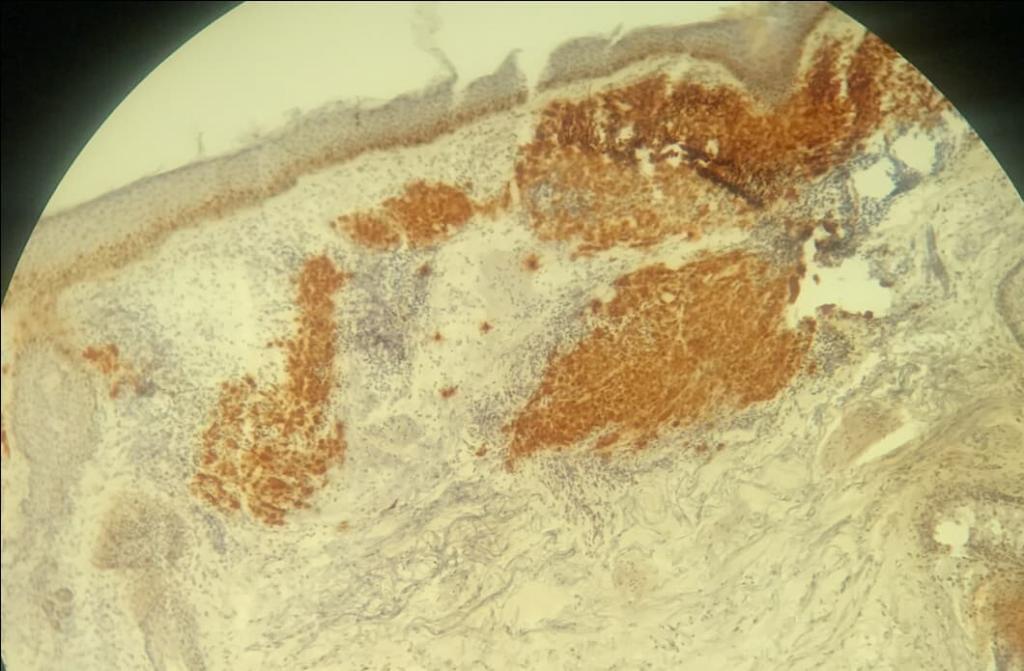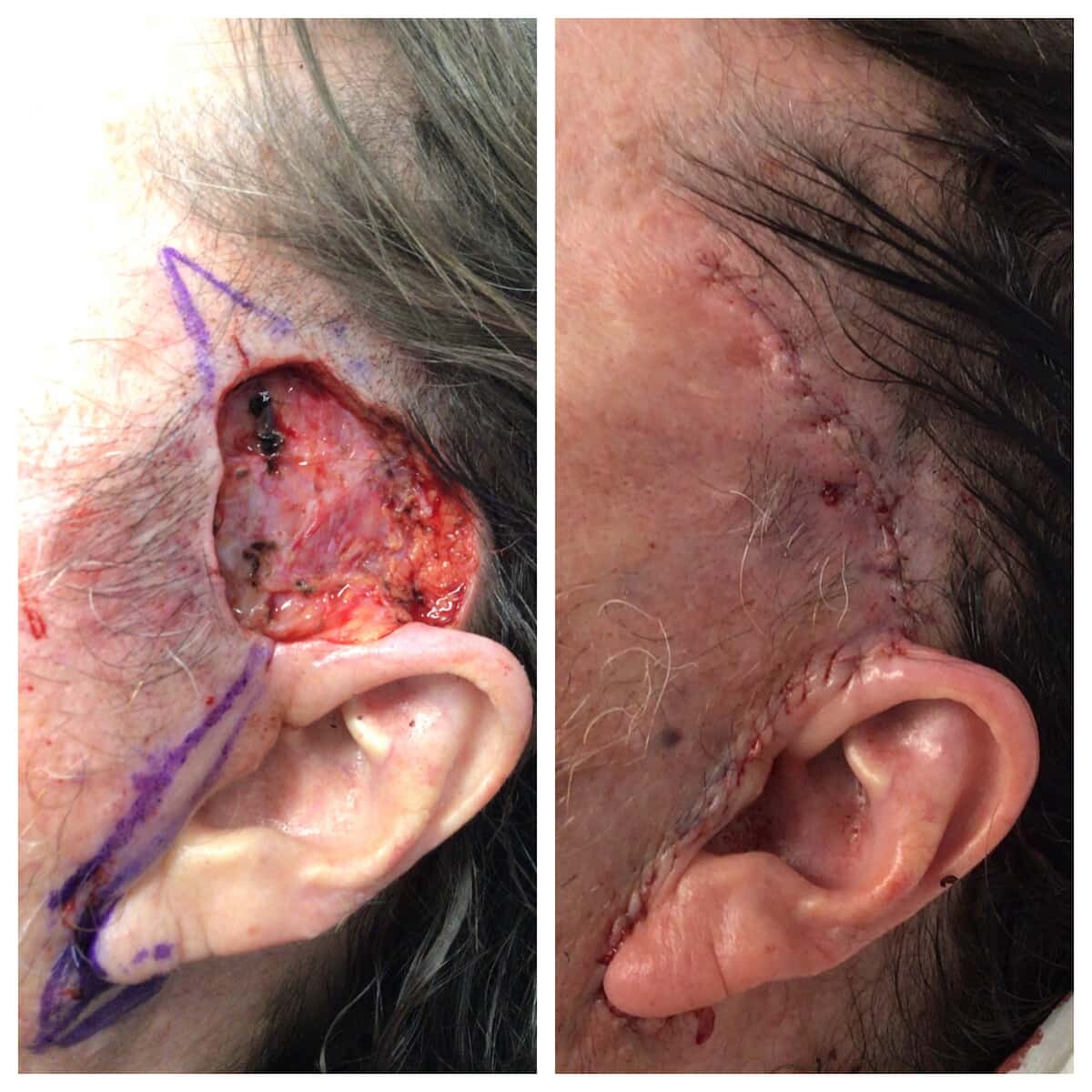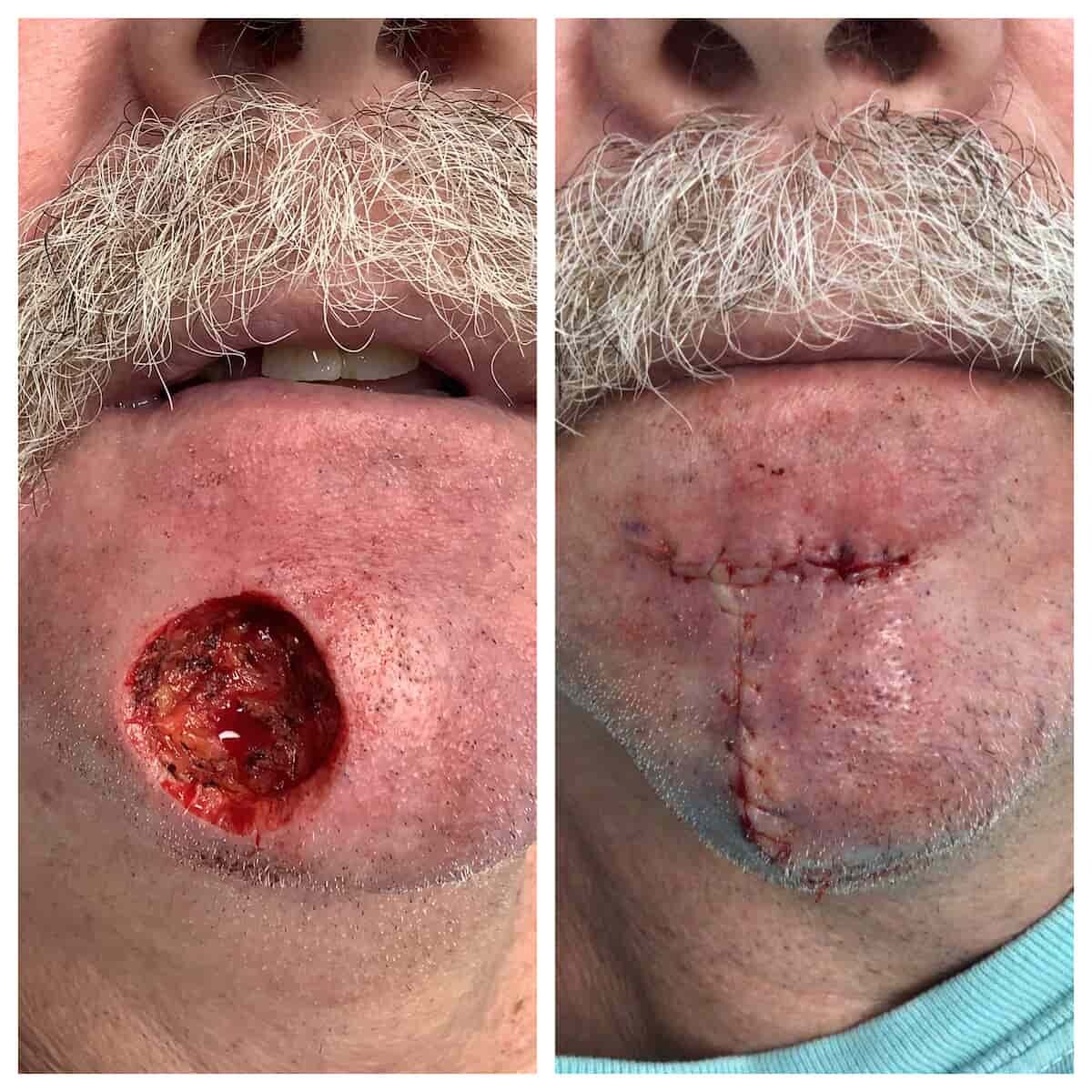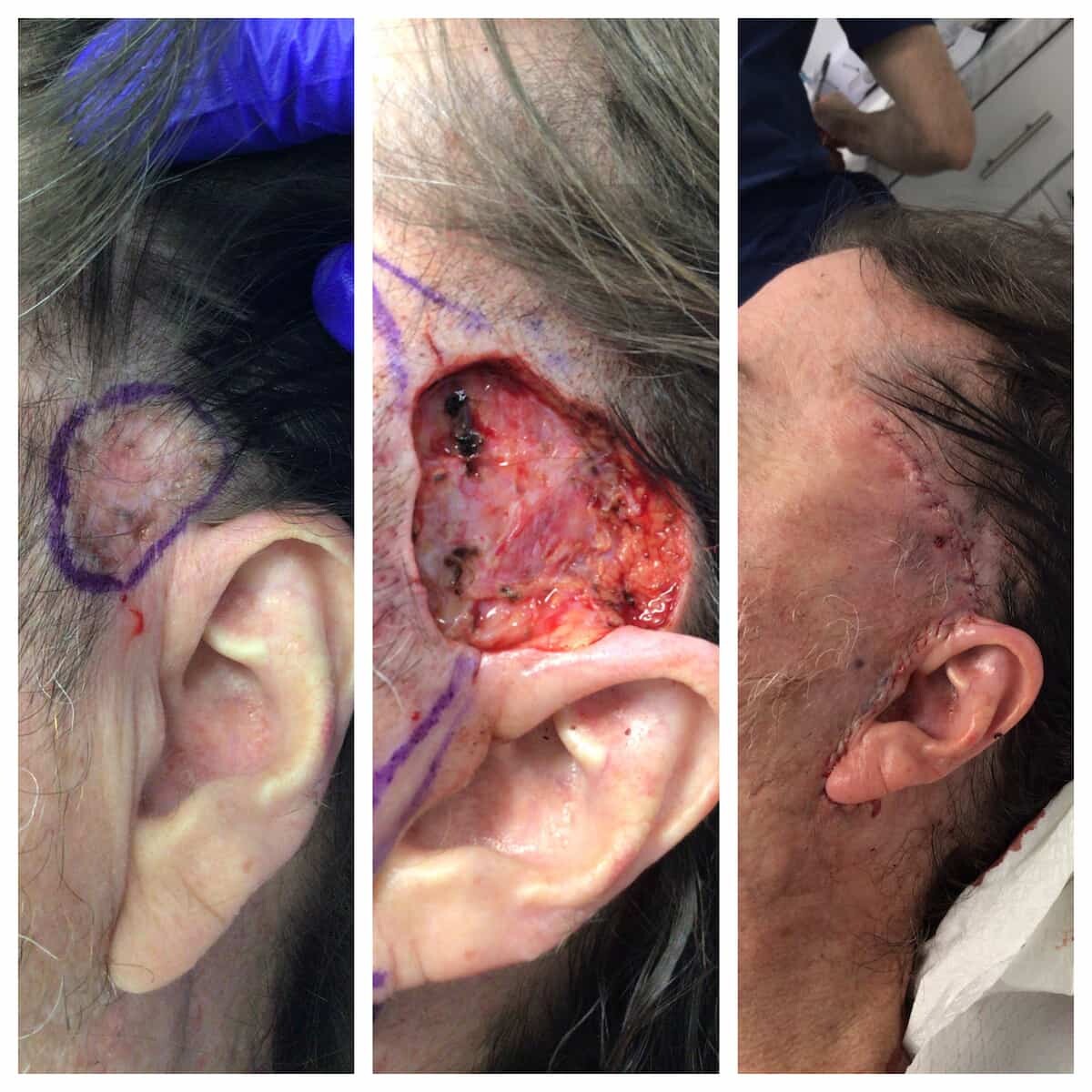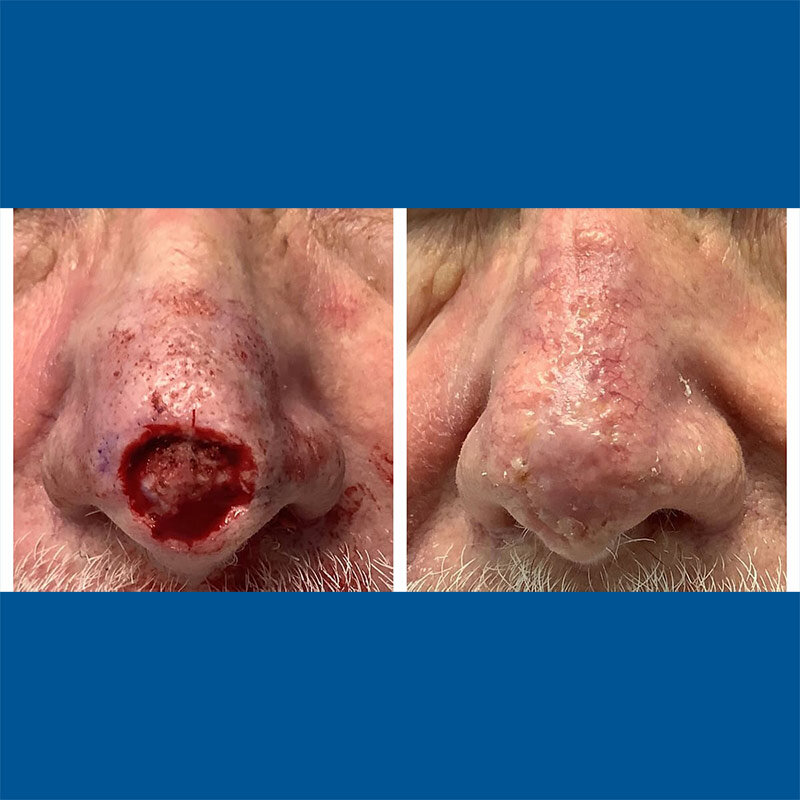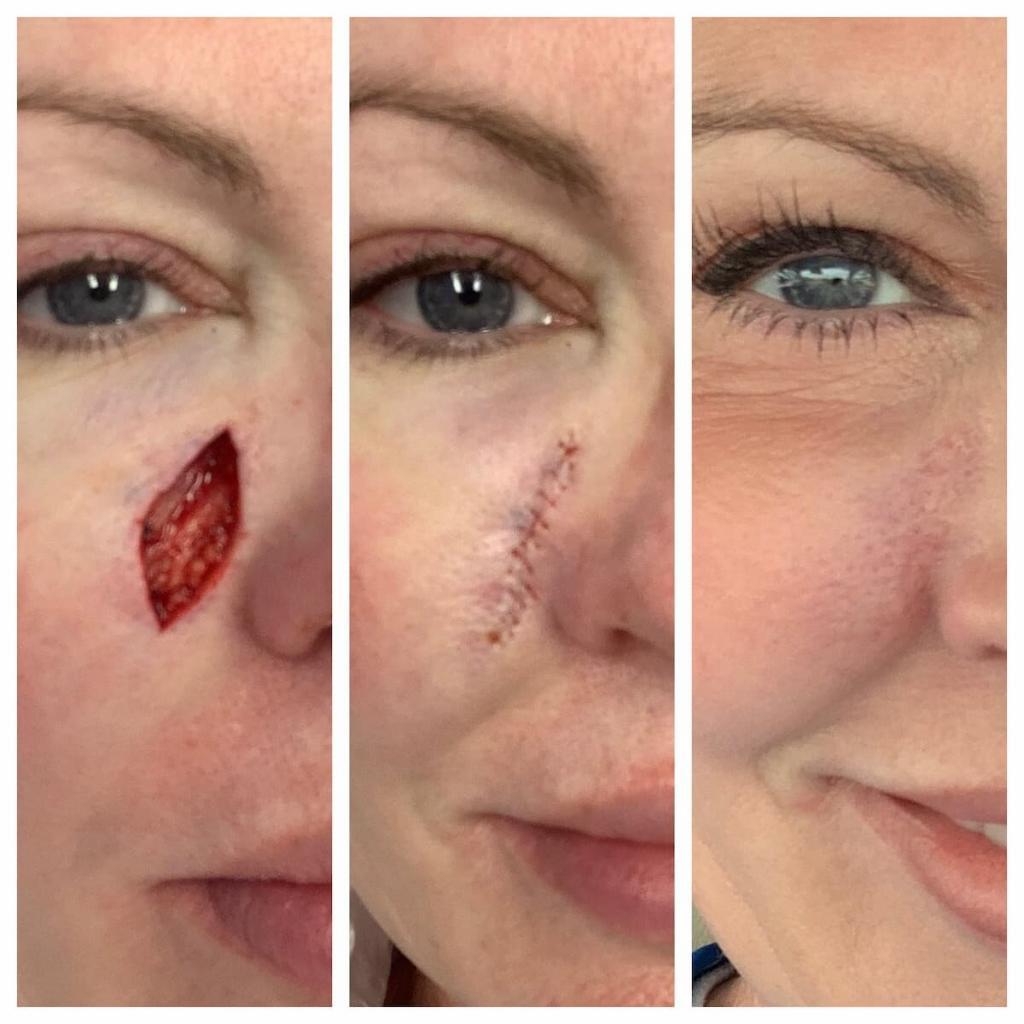Mohs Surgery & Mohs Procedure
Dr. Beal is an expert in Mohs Surgery, which has greater than a 99% cure rate for most skin cancers.
What is Mohs Surgery?
Mohs Micrographic Surgery (Mohs Surgery or Micrographic Surgery) is the most effective surgical technique for treating skin cancer. Mohs Surgery offers the highest cure rate, up to 99% while also providing the best cosmetic outcomes (Keeps you looking beautiful!).
The primary goal of skin cancer surgery is to remove 100% of the skin cancer and as little of your normal skin as possible. Mohs Micrographic surgery examines 100% of the margin (edges) of the specimen that is removed. Meaning, 100% of the side and bottom edges of the specimen are examined microscopically to ensure there are no skin cancer cells at the edges. This is why Mohs Surgery provides the highest cure rates for skin cancer, 99%, the smallest scar, and best cosmetic outcome.
Who performs Mohs Surgery?
Mohs Surgeons are Board-Certified Dermatologists who have completed a fellowship in Mohs Micrographic Surgery.
What does being a Mohs Surgeon involve?
- The Mohs Surgeon is the surgeon who removes the skin cancer
- The Mohs Surgeon is the pathologist who examines the specimen under the microscope to look for cancer “roots”
- The Mohs Surgeon is the expert in facial reconstructive surgery (Keep you looking beautiful!)
Mohs Facts:
- Mohs Surgeons perform more complex facial reconstructions than any other surgical specialty.
- Mohs Surgery is named after Dr. Fredrick Mohs who pioneer Mohs surgery for skin cancer. Dr. Mohs did not want this surgical technique named after him. Mohs surgery was named after Dr. Mohs to honor his legacy of innovation and the huge impact this surgical technique had in improving outcomes for patients.
Advantages of Mohs Surgery:
- Best outcome of any skin cancer surgery – cure rates up to 99%
- Best cosmetic outcome of any skin cancer surgery
- Single visit for your skin cancer surgery and reconstruction
- Outpatient surgery under local anesthesia: making Mohs Surgery the most cost-effective skin cancer surgery which saves you money
Mohs Surgery = Precision
- 100% of the tumor specimen is examined
- 99% cure rate for most skin cancers
- Spares your healthy normal tissue
If you do NOT have Mohs Surgery less than 1% of the tumor margin (edges of the specimen) is examined.
Why is Mohs better than traditional surgery?
Traditional surgery involves the surgeon removing the skin cancer and sending it to an outside lab, where a pathologist examines the tissue. The tissue is “bread loafed” – imagine a loaf of bread & removing a few slices to examine under the microscope. The entire crust of the bread is not examined, leaving most of the edges unexamined. This has resulted in high recurrence rates for facial skin cancers, greater than 10%. Mohs Micrographic Surgery examines 100% of the tumor edges, the entire bread crust to ensure there is no tumor at the edge of the specimen. This is why Mohs Surgery has up to a 99% cure rate, because the Mohs surgeon examines 100% of the edges of the tumor.
After your skin cancer has been treated with Mohs Micrographic Surgery, once your leave the office you are skin cancer free. With conventional surgery patients typically wait up to 1 week for results to know if the surgeon removed the skin cancer or if some of the cancer still remains. With conventional surgery, if skin cancer still remains, the patient must undergo another surgery and will have to wait an additional week to find out the results.
Benefits of Mohs Micrographic Surgery and Office-based surgery
- Safety: local anesthesia is safer than surgery performed under general anesthesia
- Less expensive: office-based surgery is less expensive than surgery performed in the operating room. Treating a skin cancer in an operating room with conventional surgery can be greater than 25 times more expensive than Mohs Micrographic Surgery. This is especially important for patients with high deductible insurance plans.
- No restrictions on eating or drinking. You should eat breakfast the morning of your surgery.
- Take your regular scheduled medications.
- Bleeding is well controlled. Continue to take your prescribed blood thinners (aspirin, coumadin, Plavix, and others). Bleeding complications are easier to treat than a stroke or heart attack.
- Patients can usually drive themselves home unless surgery is performed near the eye.
How is Mohs Surgery Performed?
Mohs Surgery is performed in stages:
Stage 1: The skin cancer is removed by the surgeon under local anesthesia.
Stage 2: The skin cancer specimen is processed in a CLIA certified lab so it can be examined microscopically
Stage 3: Your skin cancer specimen is examined microscopically to look for tumor “roots”
Stage 4: If microscopic skin cancer remains (tumor “roots”), Stage 1 & 2 are repeated until there are no more skin cancer “roots”
Stage 5: The wound is reconstructed to keep you looking beautiful!
Stage 1: The skin cancer is removed by the surgeon under local anesthesia.
The Mohs Surgeon will discuss your diagnosis with you as well tell you about Mohs Surgery. The Mohs Surgeon will then examine your skin cancer and numb the area with local anesthesia. The skin cancer is removed with a scalpel, inked with color dyes, and mapped like a clock dial, 12 o’clock, 3 o’clock, 6 o’clock, & 9 o’clock. If there is tumor seen under the microscope, the map allows the surgeon to precisely know where the tumor is located.
Stage 2: Your skin cancer specimen is processed in our laboratory, a Centers for Medicare and Medicaid Services CLIA certified laboratory.
Our technician will process your specimen so it can be examined microscopically. This takes from 45 minutes to 2 hours depending on the complexity of the specimen (if you were having conventional surgery this could take up to 1 week).
Stage 3: Using a microscope, the Mohs Surgeon examines 100% of the margin of your skin cancer specimen (100% of the edges and underside of the specimen).
Mohs Surgery is the only surgery where 100% of the edges are checked to make sure there is no skin cancer at the edge. Because the skin cancer specimen was mapped, if there is tumor seen at the edges of your specimen the Mohs Surgeon can precisely identify where this tumor is located. This allows your Mohs Surgeon to just remove the skin cancer and leave your normal skin. Mohs Surgery is the only technique where this is possible.
Stage 4: If microscopic skin cancer remains (tumor “roots”), Stage 1 & 2 are repeated until there are no more skin cancer “roots”
Stage 5: The Mohs Surgeon will comprehensively assess your wound and facial appearance to restore contour, texture, and color to ensure you have the best cosmetic result.
Restoring Form & Function:
We restore volume, color, and texture to ensure you have the best cosmetic outcome. Mohs Surgeons are the experts in facial reconstructive surgery, performing more complex facial reconstructions that any other specialty.
Mohs Micrographic Surgery is approved for the treatment of rare skin cancers:
- Melanoma
- Melanoma in situ
- Adenocystic carcinoma
- Adnexal carcinoma
- Apocrine/eccrine carcinoma
- Angiosarcoma
- Atypical fibroxanthoma
- Dermatofibrosarcoma protuberans
- Extramammary Paget’s disease (EMPD)
- Leiomyosarcoma
- Malignant fibrous histiocytoma/Undifferentiated pleomorphic sarcoma
- Merkle cell carcinoma
- Microcystic adnexal carcinoma (sclerosing sweat duct carcinoma)
- Mucinous carcinoma
- Sebaceous carcinoma
- Other rare cutaneous malignancies
Brandon T. Beal, MD

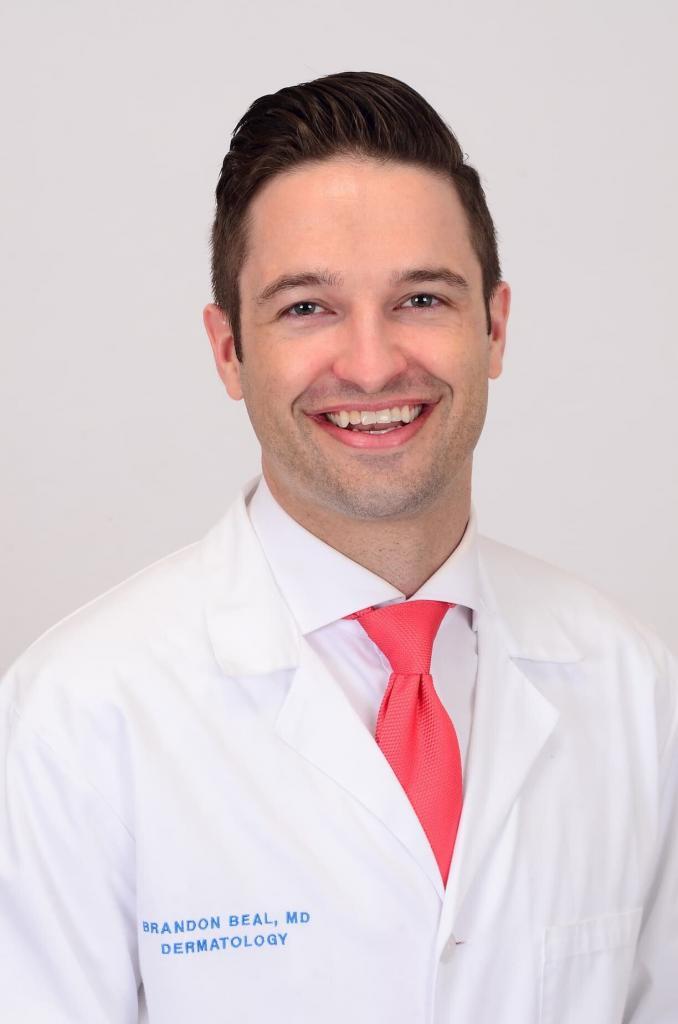
Brandon T. Beal, MD is an expert in the diagnosis and treatment of skin cancer. He is a Board-Certified Dermatologist, and Fellowship trained Mohs Micrographic Surgeon, dermatologic oncologist (cancer doctor of the skin), and facial reconstructive surgeon.
Dr. Beal completed his dermatology residency at the Cleveland Clinic Dermatology & Plastic Surgery Institute and his fellowship in Mohs Micrographic Surgery, dermatologic oncology, and facial reconstructive surgery at Zitelli & Brodland, PC. Dr. Beal trained at the Cleveland Clinic’s Melanoma program, a multidisciplinary team of dermatopathologists, pathologists, dermatologists, and surgical, medical, and radiation oncologists.
Dr. Beal provides each patient comprehensive counseling on the diagnosis and treatment of skin cancer, a thorough skin examination from head to toe, and an individualized treatment plan based on evidenced-based medicine. Dr. Beal is an expert in Micrographic Surgery (Mohs Surgery) which is the treatment that provides the highest cure rates, greater than 99% for most skin cancers. He follows the National Comprehensive Cancer Network Guidelines as well as the American Joint Committee on Cancer staging guidelines.
Mohs Surgery & Mohs Procedure St. Louis
Mohs Micrographic Surgery is the treatment that offers the highest surgical cure rate amongst all treatments for skin cancer. Mohs surgery is a technique that preserves your normal skin, focusing on just removing the skin cancer, and thereby minimizing scaring and maximizing your cosmetic outcome. Mohs Micrographic surgery is the most advanced treatment for skin cancer.
Mohs Micrographic Surgery is the only surgical technique that examines 100% of the margin (edges) of the specimen (skin cancer) that is removed. Meaning, 100% of the side and bottom edges of the specimen are examined microscopically to ensure there are no skin cancer cells at the edges. This provides patients with the highest cure rates, smallest scars, and best cosmetic outcomes for their skin cancer.

